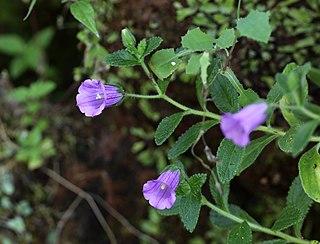
Herring are forage fish, mostly belonging to the family of Clupeidae.

The International Union for Conservation of Nature (IUCN) Red List of Threatened Species, founded in 1964, is the world's most comprehensive inventory of the global conservation status of biological species. It uses a set of precise criteria to evaluate the extinction risk of thousands of species and subspecies. These criteria are relevant to all species and all regions of the world. With its strong scientific base, the IUCN Red List is recognized as the most authoritative guide to the status of biological diversity. A series of Regional Red Lists are produced by countries or organizations, which assess the risk of extinction to species within a political management unit.

The conservation status of a group of organisms indicates whether the group still exists and how likely the group is to become extinct in the near future. Many factors are taken into account when assessing conservation status: not simply the number of individuals remaining, but the overall increase or decrease in the population over time, breeding success rates, and known threats. Various systems of conservation status exist and are in use at international, multi-country, national and local levels as well as for consumer use.

A least-concern species is a species that has been categorized by the International Union for Conservation of Nature (IUCN) as evaluated as not being a focus of species conservation because the specific species is still plentiful in the wild. They do not qualify as threatened, near threatened, or conservation dependent.

A species that is extinct in the wild (EW) is one that has been categorized by the International Union for Conservation of Nature as known only by living members kept in captivity or as a naturalized population outside its historic range due to massive habitat loss.

The Smith's shrew is a species of mammal in the family Soricidae. It is endemic to Southwest China, living primarily in mountainous broad-leaved forests at elevations of 900–3000 meters.
Campanula balfourii is a species of flowering plant in the bellflower family Campanulaceae. It is endemic to northeastern Socotra, Yemen. Its natural habitat is subtropical or tropical dry forests.
Tapeinosperma campanula is a species of plant in the family Primulaceae. It is endemic to New Caledonia.

Campanula gelida is a stenoendemic, critically endangered species of flowering plant in the bellflower family Campanulaceae. It is a perennial species that grows in the mountains of Hrubý Jeseník in the Czech Republic. It evolved through specialization of an isolated population of Campanula scheuchzeri, an Alpine species, which expanded to the area of the Sudetes during a colder period, probably the last ice age. It is closely related to Campanula bohemica, endemic to the Krkonoše Mountains. Sometimes it is even considered its subspecies and referred to as Campanula bohemica subsp. gelida. They all belong to the group of related species Campanula rotundifolia agg.
Bat Conservation International (BCI) is an international nongovernmental organization working to conserve bats and their habitats through conservation, education, and research efforts.

An endangered species is a species that is very likely to become extinct in the near future, either worldwide or in a particular political jurisdiction. Endangered species may be at risk due to factors such as habitat loss, poaching and invasive species. The International Union for Conservation of Nature (IUCN) Red List lists the global conservation status of many species, and various other agencies assess the status of species within particular areas. Many nations have laws that protect conservation-reliant species which, for example, forbid hunting, restrict land development, or create protected areas. Some endangered species are the target of extensive conservation efforts such as captive breeding and habitat restoration.

Campanula jacobaea is a species of flowering plants of the Campanulaceae family. The species is endemic to Cape Verde and is listed as vulnerable by the IUCN. Its local name is contra-bruxas-azul. The plant is used in traditional medicine. Campanula jacobaea is shown on a Cape Verdean $5 escudo coin issued in 1994.

Campanula bravensis is a species of flowering plant in the bellfower family Campanulaceae. The species is endemic to Cape Verde. The specific name bravensis refers to the island of Brava. The species was described by Carl August Bolle, and named by Auguste Chevalier in 1935. Its local name is contra-bruxas-branca.
Campanula aghrica, the Aghrian bellflower, is a rare flowering plant in the family Campanulaceae. It is native to Turkey and possibly Iran.
Campanula kantschavelii, also known as Kanchaveli's bellflower, is a species of flowering plant in the family Campanulaceae. It is native to Georgia.
Campanula lazica is a species of flowering plant in the bellflower family, Campanulaceae. It is endemic to northeast Anatolia, Turkey.

Campanula troegerae is a species of flowering plant in the bellflower family Campanulaceae. It is native to north-eastern Turkey. It can be found in the provinces of Artvin and Erzurum.

Leucadendron dubium, the Cederberg conebush, is a flower-bearing shrub that belongs to the genus Leucadendron and forms part of the fynbos. The plant is native to the Western Cape in the Cederberg. The plant's habitat is threatened by the rooibos tea industry.










